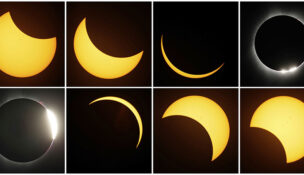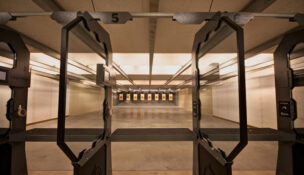Sports teams are cranking up the volume on the digital experience
Applying fake noise to a live game demands careful calibration
Stewart Schley //November 13, 2020//


Sports teams are cranking up the volume on the digital experience
Applying fake noise to a live game demands careful calibration
Stewart Schley //November 13, 2020//
In the late 1980s, NFL bosses grew so concerned about crowd noise that they empowered referees to delay games if players couldn’t hear the quarterback barking out signals. Just when the big moment was at hand, a ref would stop the action to demand quietude from 75,000 or so revved-up fans. Failure to pipe down meant your team could lose timeouts, and ultimately might result in a five-yard penalty.
It went over about as well as instructing your 10-year-old to close Minecraft and set the dinner table. Crowds did what crowds do, which was to stomp on surfaces and slap hands and elevate the yelling so that conditions for the next play were even louder. The league gave up the whole nonsense before the 1990 season, and NFL crowds have been liberated to bring the noise ever since.
Crowds matter. A 2014 study published by the Encyclopedia of Sport and Exercise Psychology found the winning percentage for NFL home teams over a five-year span was 58.2 percent. In the NBA, it was 61 percent. For players, the ability to sleep at home helps, of course, but c’mon: If you don’t think the din created by rabid fans makes an impact, then you haven’t high-fived that guy who sits in front of me in Section 113 when both of us know, and I mean know, we basically just caused that fumble.
Thus, a fascinating experiment is unfolding as games are played in the absence of a live crowd. During 2020 Colorado Rockies games, what would have been live shouts and strident booing of inept umpires has yielded the stage to canned audio. Technicians are making noise the digital way, by pressing buttons on tablet computers to evoke any of 50 pre-recorded crowd sounds. It’s their job to adroitly and with minimal latency match the sound to the moment, digging into a tool chest of audio files that originally were produced to add realism to MLB: The Show, a videogame from Sony Interactive Entertainment. Thus, our loop has now been closed: Sounds originally recorded from a live crowd and imported into a videogame are now exported back into an empty ballpark from the same videogame. Marshall McLuhan lives.
Applying fake noise to a live game demands careful calibration. An issue for the NFL, for example, is that loudspeaker arrays are pointed toward the crowd, not the field. That’s good for revving up the faithful with AC DC’s “You Shook Me All Night Long” (a Broncos Sunday afternoon standby), but it doesn’t do much to replicate the celebration from the crowd that players rely on to get pumped up. “Mimicking fan noise could require reorienting (speakers) or adding a secondary sound system,” points out the environmental design firm Arup, which is devising ways to enhance the aural experience both in stadiums and via electronic media.
Behind the curtain, here is a fascinating existential question: Do you really need a live audience to stage a game? (I lived in Los Angeles during the early 1980s when the Raiders played at the Coliseum and basically nobody came or cared, so I’d say the answer is “no.”)
It’s a question rooted in economics, with football the easy example. The NFL gets most of its $16 billion in annual revenue not from season-ticket holders and game-day concessions but from TV rights deals. True, the equation is different in baseball, hockey and basketball, where there are far more sellable seats per season, but the broader point remains: Presenting a professional sporting event is an activity dedicated to an electronic audience in equal or greater measure than a live crowd. If you want to get really carried away, you can conjure the next step: Why rely on human players at all to carry the action (and the ball)? The explosive growth of e-sports, a realm in which fans devote rapt attention to watching digital avatars do battle on the screen, tells us this fairly disturbing idea isn’t purely speculative.
For now, however, I say we insist on the real deal. When they finally open the turnstiles back up (please tell me they are going to open the turnstiles back up), let’s return to our seats, watch the action with our own eyes, and maybe burn those cardboard cutouts in a roaring bonfire on Market Street.
Let’s yell and murmur and applaud, and let’s do it better and more extemporaneously and with more verve and less latency than what some guy with an iPad and a killer sound system can pull off. Let’s put MLB: The Show back where it belongs, in the Xbox in the basement. Let’s make us some real noise, fans.
Stewart Schley writes about sports, media and technology from Denver. Read this and Schley’s past columns on the web at cobizmag.com and email him at [email protected].

























